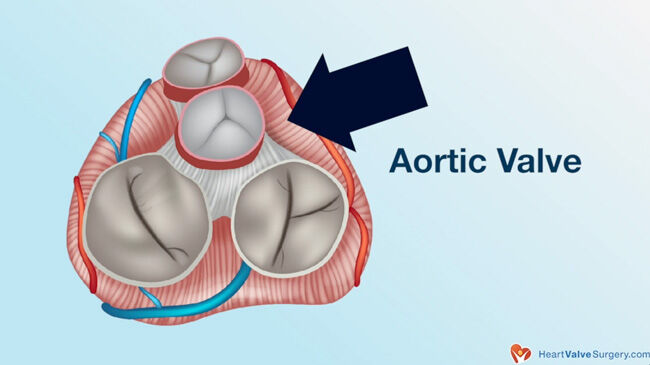Doctor Q&A: “Will My Dilated Aortic Root Progress to Needing Surgery?” asks Desmond
Written By: Adam Pick, Patient Advocate & Author
Medical Expert: Luis Castro, MD, Medical Director, Cardiac Surgery, Dignity Health Sequoia Hospital
Published: August 17, 2022
I just received a great video question from Desmond in Ireland about the progression of dilated aortic roots. In his video question, Desmond asks, “Is there a chance that the progression of my dilated aortic root will stop and never need surgery in the future?”
To answer Desmond’s question, I connected with Dr. Luis Castro, the Medical Director of Cardiac Surgery at Dignity Health Sequoia Hospital in Redwood City, California. During his career, Dr. Castro has performed over 5,000 cardiac procedures and more than 3,000 heart valve operations. In the HeartValveSurgery.com community, Dr. Castro has successfully treated over 190 patients including Shelly Gould and James Hoffman.
Key Insights About Dilated Aortic Roots
Here are important insights from Dr. Castro about dilated aortic root progression and surgery:
- There are many factors that can determine whether-or-not a dilated aortic root may progress and require surgery.

Dr. Luis Castro with Desmond Reynolds (Patient)
- According to Dr. Castro, the size of the dilated aortic root over time is a key consideration. Dr. Castro states, “It is important to know that you do have an aneurysm at the base of your heart that is 4.5 centimeters. What we don’t know is what it was like five years ago. It is possible that you’ve had a fairly stable, somewhat enlarged aorta for some time. That may never change in dimension. It’s going to be very important for you to follow up with imaging in 6 to 12 months or whenever is recommended by your physician.”
- Patient age can be a critical factor in evaluating the need for aortic root surgery. Dr. Castro states, “The younger you are, definitely the more likely it is that these aneurysms, they don’t get smaller. They get larger with time. If you were 75 years old, it might be something that you could live with to get you to 90. We got to look at the long-term plan here.”
- Patient size – height and weight – is another important factor to consider specific to the progression of dilation aortic root aneurysms. For example, larger patients will have larger aortic roots.
- There are patient risks and potential life-threatening situations that may occur if a dilated aortic root progresses to the point of rupture, tear or dissection. “We have to be very careful with how we’re going to watch these aneurysms,” states Dr. Castro. “We want to make sure that we can safely address them when they get too large. That’s usually about 5 to 5.5 centimeters in diameters when they start posing a risk of actually rupturing or turning from the inside.”

- There is a known association between aortic aneurysms and aortic valve disease. Patients with aortic aneurysms should get regular echocardiogram to evaluate the health and/or disease of the aortic valve.
Many Thanks to Dr. Castro and Dignity Health Sequoia Hospital!
On behalf of our patient community, many thanks to Dr. Luis Castro for sharing his clinical experiences and research specific to dilated aortic root aneurysms. We also want to thank the entire Dignity Health Sequoia Hospital team for taking such great care of our patients with heart valve disease.
Keep on tickin!
Adam
P.S. For the deaf and hard of hearing members of our community, I have provided a written transcript of my interview with Dr. Castro below.
Video Transcript:
Adam Pick: Hi, everybody. It’s Adam at heartvalvesurgery.com. Today we’re answering an international video patient question all about dilated aortic roots. I am thrilled to be joined by Dr. Luis Castro, who is a leading cardiac surgeon at Dignity Health, Sequoia Heart Hospital in Redwood City, California. During his extraordinary career, Dr. Castro has performed over 5,000 cardiac procedures with more than 3,000 involving some form of heart valve repair or heart valve replacement procedure. Dr. Castro, we’ve known each other for a long time. It is great to see you again. Thanks for being with us.
Dr. Castro: Absolutely, Adam. It’s great to see you. It’s great to be on the heartvalvesurgery.com website answering questions for your community of amazing patients that share many stories that help other patients get through this process, which can be very scary.
Adam Pick: We’re going to get to a patient question for you, Dr. Castro, but first, you are now at a point where you’ve treated over 190 patients from our community. I just want to take a moment to thank you and your team there at Sequoia Hospital.
Dr. Castro: You’re welcome, Adam. It takes a village. It really does. It’s not just me. It’s a team of people, talented people. We’re happy to serve your community.
Adam Pick: Now, let’s get to the question, Dr. Castro. This one is coming to us all the way from Ireland. It’s from Desmond about aortic aneurysms and their progression. Here it comes.
Desmond: Hello, Dr. Castro. This is Desmond all the way from Ireland. I’ve been recently diagnosed with an inflated aortic root, and it’s currently at 4.5 centimeters. My question to you is is there a chance that the progression will stop and in fact that I will never need surgery in the future? I would love for you to take this opportunity to answer this question. Many thanks, Dr. Castro. Goodbye.
Dr. Castro: Desmond, that’s a really great question. Aneurysms of the aortic are very interesting. There are many factors that play into whether or not you will ever need anything done to your aortic roots. You look very young to me. It is important to know that you do have an aneurysm at the base of your heart, so the aorta. That is 4.5 centimeters. What we don’t know is what it was like five years ago. It is possible that you’ve had a fairly stable, somewhat enlarged aorta for some time. That may never change in dimension. It’s going to be very important for you to follow up with imaging again in 6 to 12 months or whenever is recommended by your physician.
The younger you are, definitely the more likely it is that these aneurysms, they don’t get smaller. They get larger with time. If you were 75 years old, it might be something that you could live with to get you to 90. We got to look at the long-term plan here. If you’re 30 years old, we got to be very careful with how we’re going to watch these aneurysms. We want to make sure that we can safely address them when they get too large. That’s usually about 5 to 5.5 centimeters in diameters when they start posing a risk of actually rupturing or turning from the inside.
Adam Pick: Dr. Castro, quick follow-up. In talking with Des this morning, I learned he’s a pretty big guy. I’m curious to know, do treatments of aneurysms based upon guidelines from the American Heart Association, are those dependent or relative to the size of the individual and the size of the aneurysm?
Dr. Castro: Desmond has an aneurysm or a diameter. I don’t know if it’s an aneurysm. It’s important to actually look at the imaging to see what the morphology or shape of the aorta is at the roots. If we’re talking just diameter of the aorta, you can imagine that large people, people who are two meters in height or six foot two, six foot three, football players, very large basketball players, have dimensions that are much larger than the normal human being. A dimension of 4.5 can be relatively normal in a patient who’s very big compared to that same dimension in somebody who’s much smaller.
Adam Pick: Dr. Castro, can’t leave this conversation with trying to connect aneurysms with what else? Valves. Is there anything else that Des should know about – and the rest of our viewers – about dilation of the aorta and valve disease?
Dr. Castro: Great question, Adam. Of course we’re on heartvalvesurgery.com, so I think it’s an important question. When you’re diagnosed with an enlarged aorta, it’s also important to understand whether or not you may have an aortic valve issue as well. It’s not uncommon to have aortic valve pathology associated with aneurysms or enlargements of the aorta at the base of the heart. Along with the CT scan or MRI that images the aorta, it’s important to have your doctor order an echocardiogram to exclude the possibility of also having an abnormality of the aortic valve.
Adam Pick: Des, I hope that helped you and all the other viewers watching this video. I know it helped me. Dr. Castro, again, thanks for taking time away from your very busy practice there at Sequoia Hospital in Redwood City, California and sharing all this wonderful education, insight, and research with our community.
Dr. Castro: Thank you, Adam. Keep doing what you’re doing?
Adam Pick: Hi, everybody. It’s Adam. I hope you enjoyed that video. Don’t forget, you can always subscribe to our YouTube channel. Watch the next two educational videos coming up on your screen or click the blue button to visit heartvalvesurgery.com.





